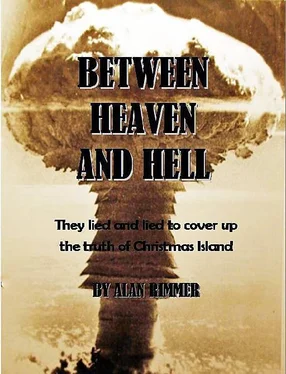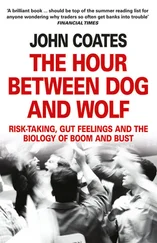There was much rejoicing and the scientists became the “nuclear knights” of the realm invested with Arthurian acclaim and prestige. Their stock rose even higher when Britain’s young Queen Elizabeth II formally opened Britain’s first nuclear power plant on the nearby Calder Hall site in October 1956.
The new station was hailed as a world first and amazing things were promised. The new “super-fuel” would soon transform energy supplies.
Word got round that a single ton of uranium would release as much energy as four million tons of coal, making nuclear power “too cheap to meter.”
Holiday jets and cruise ships would soon be powered by nuclear engines; harbours could be blasted out of the coastlines by “controlled atom bombs”, and even household appliances such as kettles and washing machines could, in theory at least, be powered by “nuclear atoms.”
None of these things of course ever came to fruition, but it was necessary to whip up the patriotic fervour to mask Windscale’s primary objective: to produce the fuel for Britain’s atomic weapons.
As the arms race intensified Britain was desperate to stay in the running. More and more demands were made on Windscale, to produce enough plutonium for Britain’s bomb makers at Aldermaston.
The workload became too much and the system began to creak. The first ominous sign occurred in May 1956 when a steel component in the furnace with its deadly charge of uranium fuel shattered.
An immediate repair was essential to prevent a massive release of radioactive gases. The only way to repair the damage was by entering the “basement” of the furnace via the concrete channel that links the furnace to a deep pond used to store the spent fuel rods.
But even with protective suits, no man could spend more than 25 minutes in the chamber. Meltdown was only averted by 251 volunteers working in quick-change relays.
Details of the incident were kept secret and the crash production of plutonium for Britain’s nuclear bombs continued unabated. It finally proved too much for the system. In October 1957 Pile No. 1 blew its top and an uncontrolled fire raged for two days and nights.
According to official reports a problem was first identified at 2pm on October 10 when radiation monitoring equipment identified activity in an air sampling filter.
Other measurements were taken from various areas of the site before Pile No 1 was examined by health physics officials. The sight through a viewing window must have made their hair stand on end: the heart of the pile containing the uranium was glowing white hot and vast quantities of radioactivity were being released.
Amazingly the plant’s bosses tried to keep things “in-house” and no warnings were issued. As Pile No 1 spewed radioactivity into the air, local people went about their business as usual; mothers pushed their babies in prams along the streets, shops displayed their foodstuffs in the windows and young children played in their gardens.
While this was going on Windscale managers were in a panic. No-one seemed to know what to do and for a while the site resembled a film set for the Keystone Cops.
Guards from the on-site Atomic Energy Authority police were issued with protective suits and respirators, and ordered to guard the perimeter. But the sight of these unfamiliar figures, reeking of rubber and grunting incoherently into facemasks sent their Alsatian guard dogs wild, the result being they immediately attacked their masters.
As the guards and dogs ran hither and thither over the site, the managers were desperately trying to find out what was happening inside the furnace. An old periscope from a submarine was used to look inside the furnace while a contingent of men were despatched to strip a nearby building under construction of its scaffolding.
Scores of men, working without protective clothes, used the scaffolding to push thousands of highly radioactive fuel elements out of the stricken reactor pile. Others wrestled with burning graphite as the furnace began to glow red hot.
They worked through the night but the pile carried on burning and the scaffolding glowed white hot and melted. They soon became exhausted and most had far exceeded the radiation limit. Other volunteers were bussed in from outside.
After two days, and with the fire burning out of control, the decision was taken to try to put the fire out with water hoses. This was a highly risky procedure which could have culminated in a huge explosion.
But the bosses decided they had no choice; only then was the local police force alerted and evacuation procedures put in place. Luckily the feared explosion never materialised and the situation was gradually brought under control.
But by this time the word was out and a ripple of panic spread throughout the surrounding communities. Local media representatives arrived at the gates of the plant and their ranks were soon swelled by hundreds more who swept up from Manchester and London to report on the “Plant of Doom.”
Windscale managers felt as though they had been transported back to the French revolution as the clamouring mob besieged the gates to the plant. The situation was not made any better by the all-pervading stench of thousands of gallons of sour milk dumped by local farmers in fields after officials warned their cattle had been grazing on contaminated land.
With the world now watching, the government was desperate to play-down the incident. Press releases spoke of only “minimal” releases of radiation and reassured the public that the release of iodine-13, which could cause thyroid cancer, would deteriorate in less than a week.
But prime minister Harold McMillan wanted to bury the issue, and summoned one of the few men he could trust to clear up the mess: William Penney.
Penney, already overloaded with work on the imminent Grapple X H-bomb trial at Christmas Island, rattled through the proceedings with almost indecent haste and “faults of judgement and inadequacies of instruments” were blamed for the accident.
A White Paper, published barely a month later, stated that the “Windscale mishap” caused injury to no-one and did not cause any local contamination.
An early press release suggested that most of the contamination was blown into the Irish Sea, although this was later amended when it was admitted there were two distinct plumes, one that carried fallout toward the north-east and the second south-east over densely-populated areas of England.
Contamination eventually reached western Europe. Penney insisted that much of the evidence presented to the inquiry be presented in secret because of national security considerations. The effect was to put a cloud of distrust over the site. And there was much to be suspicious about.
Joseph Corrie, a Sellafield worker who helped put out the fire later died from bone cancer. His widow Sheila told an inquest her husband had worked at Sellafield since 1947.
On the day of the 1957 fire she said: “He had been working right underneath the fallout. They were told the following Monday to wash all their clothes, but he had worked all day in those clothes. Someone told him he was contaminated.”
She said her husband’s illness started with pain in his back and ribs and was in “terrible pain.” Sellafield’s chief medical officer Dr Geoffrey Schofield said he carried out tests on Mr Corrie’s liver, lung and bones. These showed levels of plutonium in the organs between five and 10 times that in the general public. He added that the quantities of plutonium were “extremely small.”
The eight-man jury at Whitehaven returned an open verdict on Mr Corrie’s death.
Nuclear scientist Joseph McMaster was enjoying a day off at Seascale with his family when the fire broke out. He, his wife Stella and baby daughter Lynn were all exposed to radioactive fallout as they enjoyed a brisk walk along the coast.
Читать дальше












